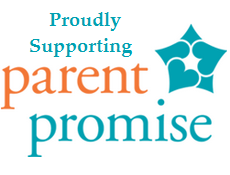Refinancing your home can be a game-changer for your financial stability, offering opportunities to lower monthly payments, secure a better interest rate, or access cash for significant expenses. However, navigating the refinancing process can feel overwhelming without the right guidance. Whether you’re refinancing to reduce costs or consolidate debt, working with a reputable lender is critical to achieving your financial goals.
What is House Refinancing?
Refinancing a home means replacing your existing mortgage with a new one, typically with better terms. It allows homeowners to take advantage of lower interest rates, shorten the loan term, or switch between adjustable-rate and fixed-rate mortgages. Some homeowners also refinance to access equity they’ve built in their homes through cash-out refinancing, using the funds for renovations, education, or other significant investments.
The Benefits of Refinancing Your Home
- Lower Interest Rates One of the primary reasons homeowners refinance is to take advantage of lower interest rates. A reduced rate can lead to significant savings over the life of the loan and lower monthly payments, improving cash flow.
- Shorten Loan Term Refinancing to a shorter loan term, such as moving from a 30-year to a 15-year mortgage, can help you pay off your home faster and save on total interest paid. While monthly payments might increase slightly, the long-term savings often outweigh the upfront costs.
- Access Home Equity A cash-out refinance allows you to tap into your home’s equity and use the funds for major expenses, such as home improvements, medical bills, or debt consolidation. This is often a more affordable borrowing option compared to high-interest personal loans or credit cards.
- Switch Loan Types Homeowners with adjustable-rate mortgages (ARMs) may refinance into a fixed-rate loan to secure stable payments over time. Conversely, those with a fixed-rate mortgage might refinance into an ARM if they plan to sell the property within a few years and want to take advantage of lower initial rates.
- Eliminate Private Mortgage Insurance (PMI) If you originally purchased your home with less than 20% down and are paying PMI, refinancing may allow you to eliminate this cost if your home’s value has appreciated enough to reach 20% equity.
The Refinancing Process
- Evaluate Your Financial Goals Determine why you’re refinancing. Are you looking to lower your monthly payments, access cash, or pay off your mortgage faster? Understanding your goals will help you choose the best refinancing option.
- Check Your Credit Score Your credit score significantly impacts the interest rates and loan terms offered by lenders. Ensure your credit score is in good shape before applying for refinancing.
- Research and Compare Lenders Not all lenders are created equal. Take time to research and compare home refinance lenders to find one that offers competitive rates, transparent fees, and excellent customer service. Look for lenders that specialize in refinancing and have positive reviews from past clients.
- Gather Documentation Just like when you first applied for a mortgage, refinancing requires specific documentation, including proof of income, tax returns, and details about your current mortgage. Preparing these documents in advance can streamline the process.
- Apply and Lock in Your Rate Once you’ve selected a lender, submit your application and lock in your interest rate to protect yourself from market fluctuations. Your lender will guide you through the underwriting process and schedule the closing.
Choosing the Right Lender
Selecting the right lender is crucial to making the refinancing process smooth and successful. A good lender will not only offer competitive rates but also take the time to explain your options, answer questions, and ensure you’re making the best decision for your financial situation.
Working with trusted home refinance lenders can also help you identify potential savings opportunities or refinancing strategies that align with your goals. Look for lenders that prioritize transparency and have a track record of satisfied customers.
Conclusion
House refinancing can be an excellent strategy for improving your financial outlook, whether you’re aiming to lower your monthly payments, pay off your mortgage faster, or access your home’s equity. By working with the right lender and understanding the process, you can unlock significant savings and gain greater control over your finances.
If you’re ready to explore your refinancing options, reach out to experienced professionals who can guide you every step of the way. With the right support, refinancing your home can be a straightforward and rewarding financial decision.


